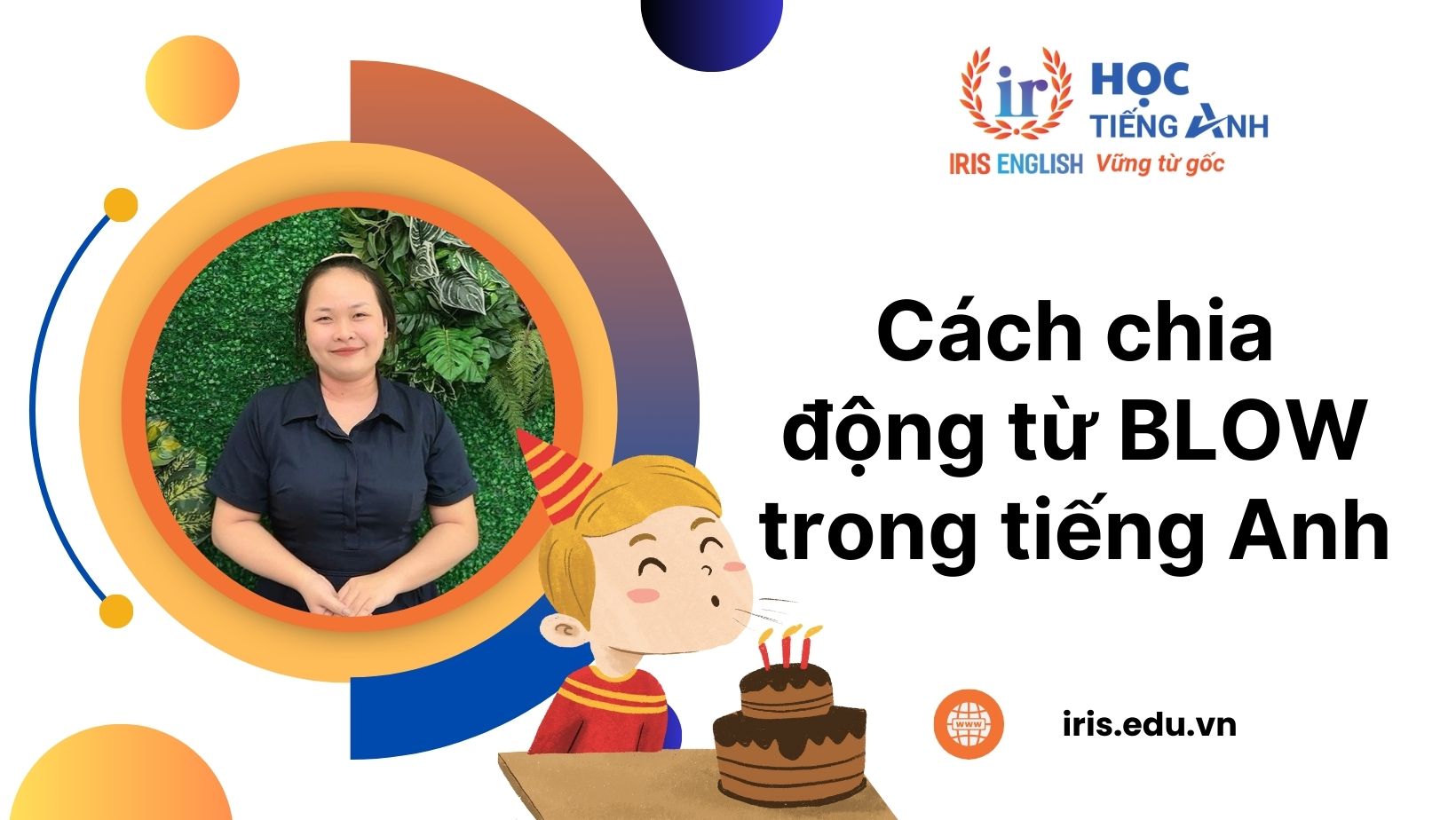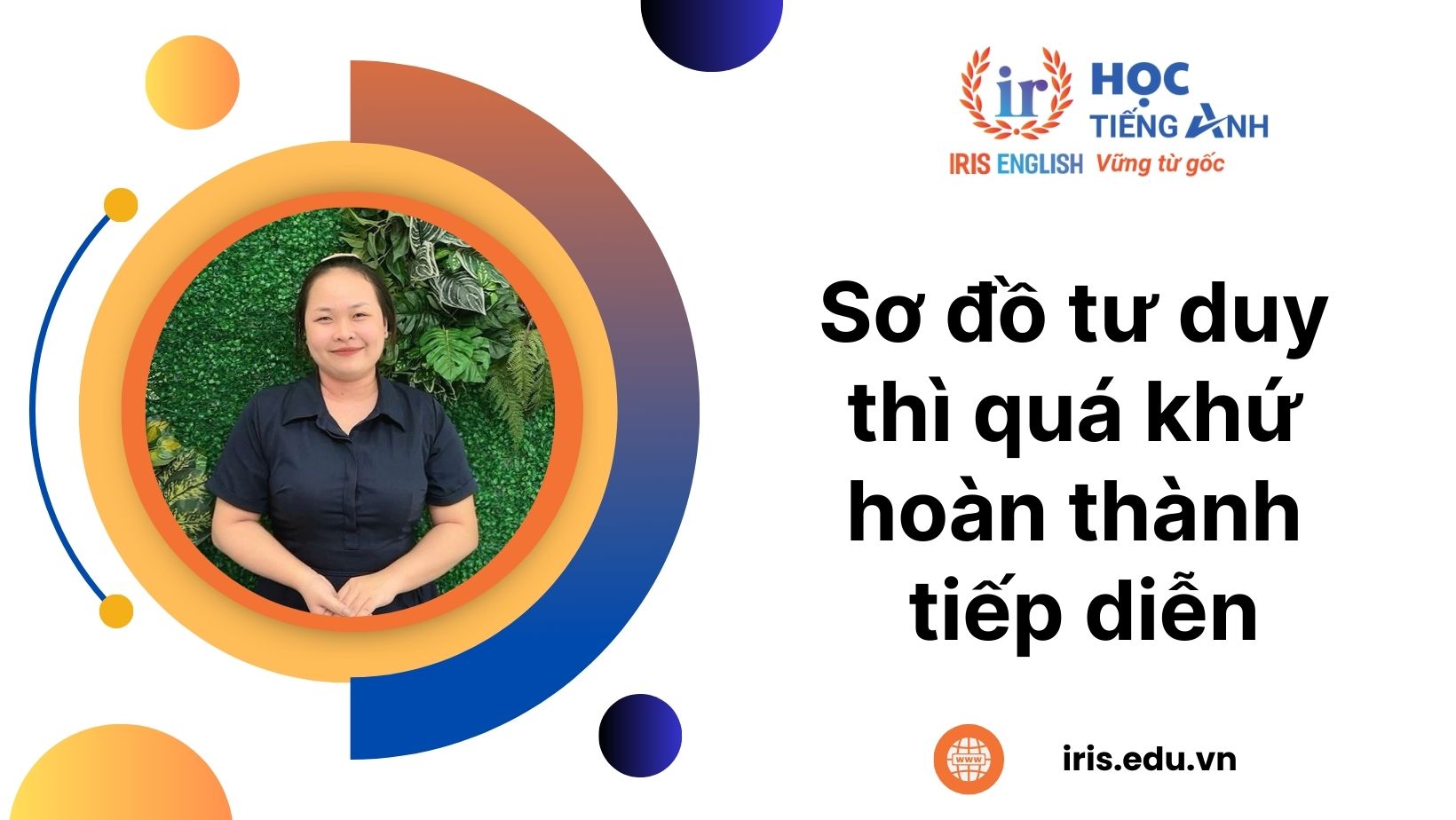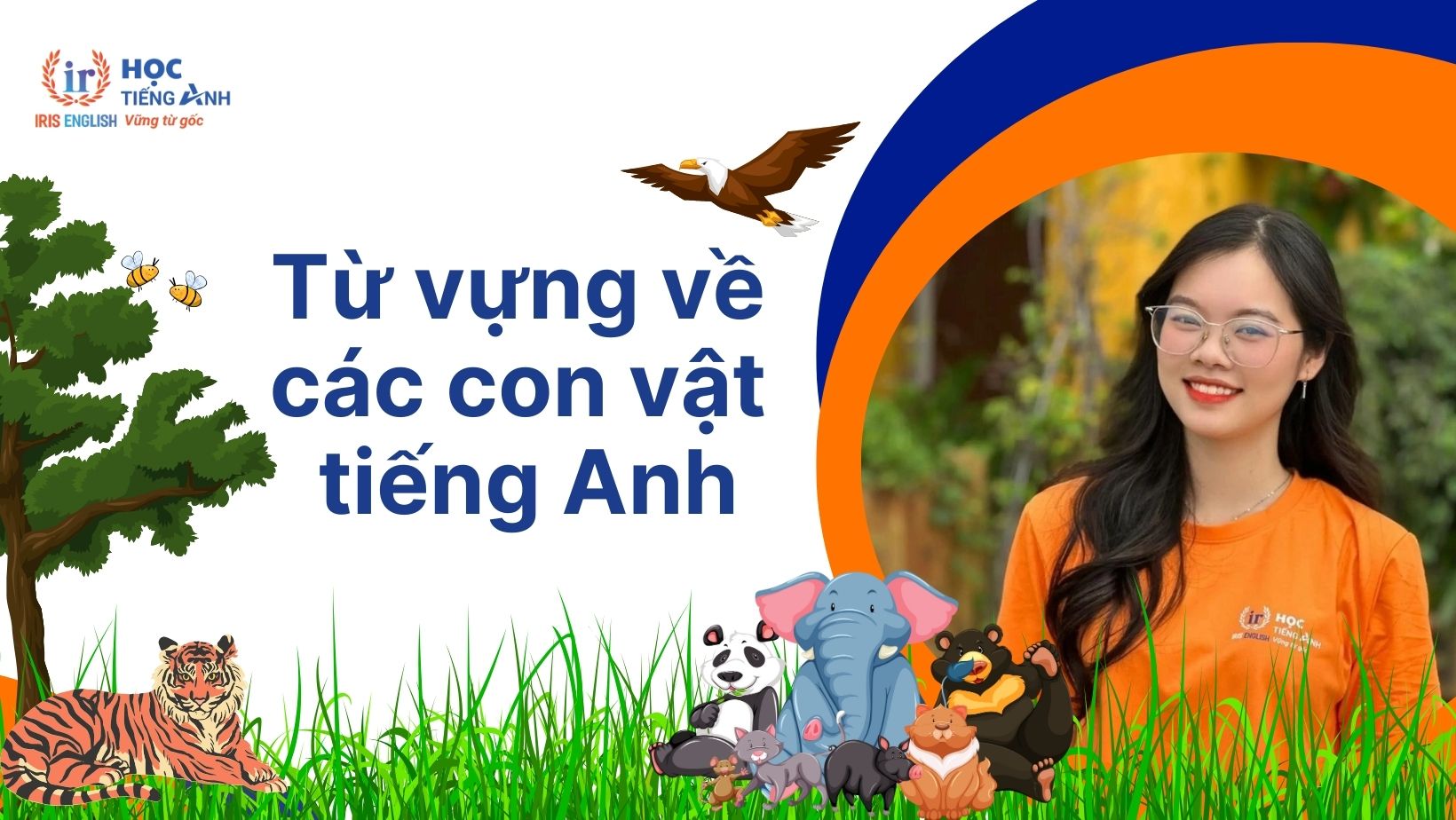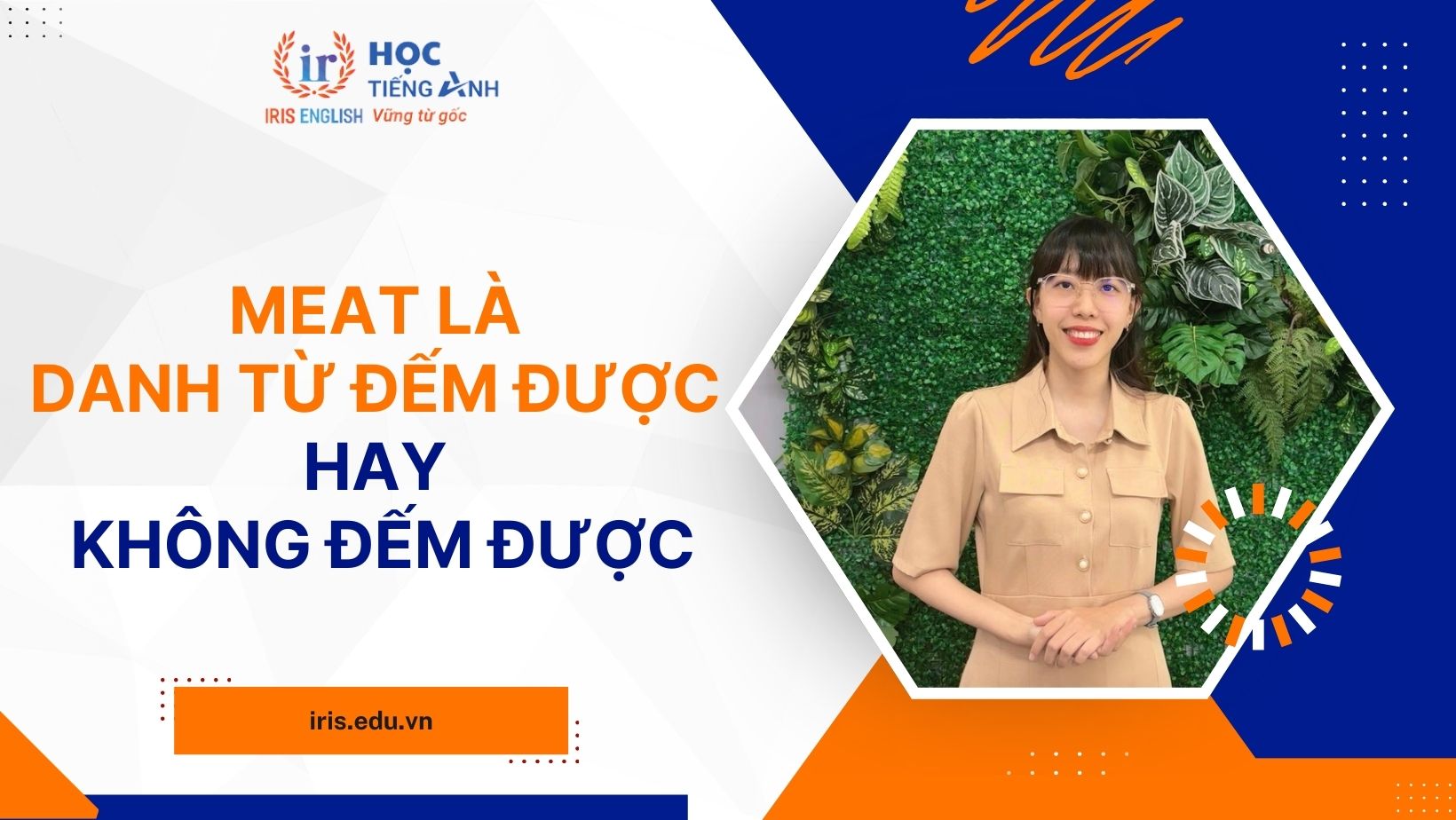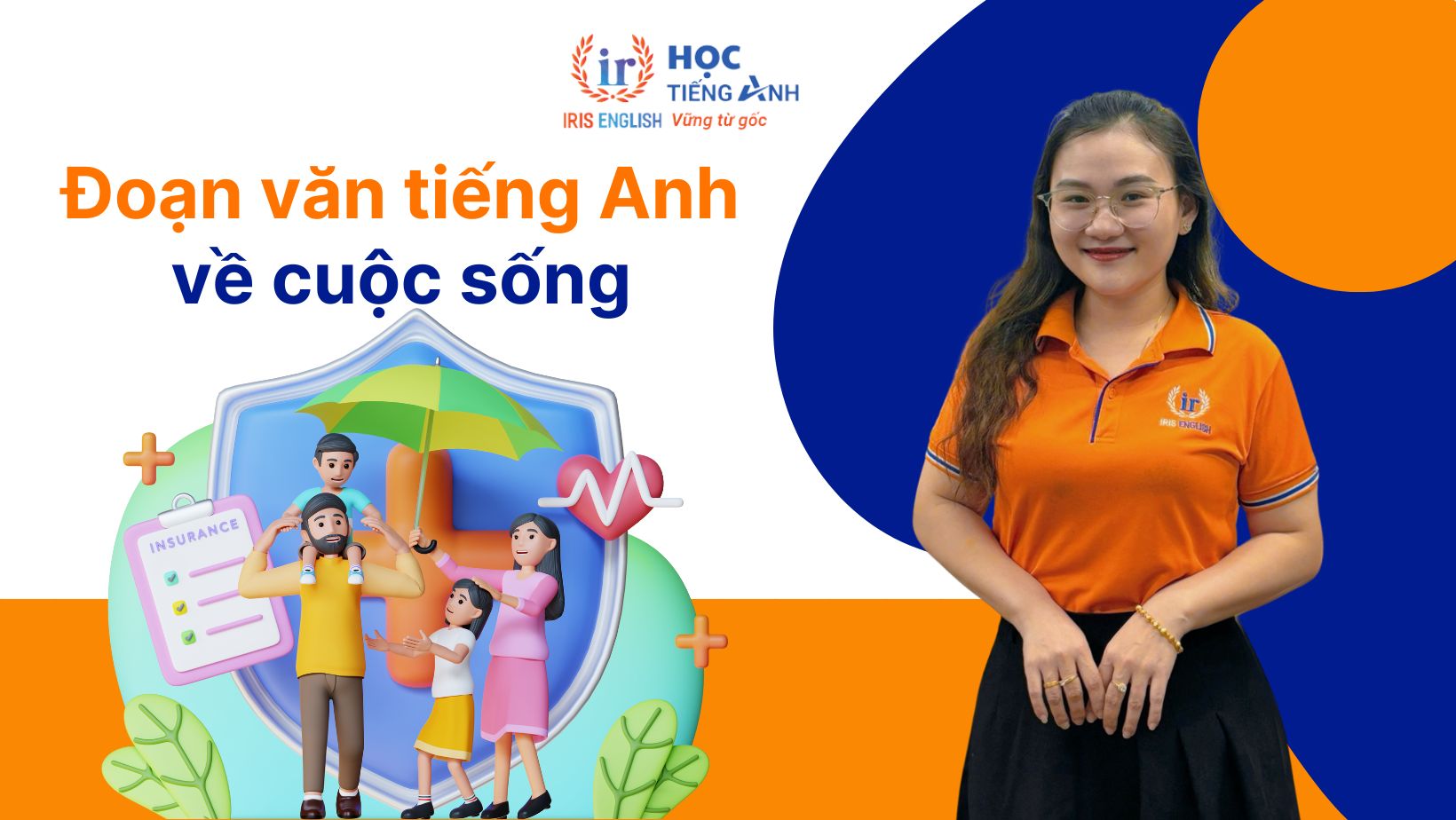Bạn đang tìm Jack seed germination listening answers? Trong bài viết bên dưới, IRIS English sẽ gửi đến bạn lời giải đề IELTS Listening Cambridge 13 Test 1 Section 3 với transcript và dịch nghĩa transcript chi tiết nhé!
Jack seed germination listening questions
Questions 21-25
Choose the correct letter, A, B or C.
-
Why is Jack interested in investigating seed germination?
A. He may do a module on a related topic later on.
B. He wants to have a career in plant science.
C. He is thinking of choosing this topic for his dissertation.
-
Jack and Emma agree the main advantage of their present experiment is that it can be
A. described very easily.
B. carried out inside the laboratory.
C. completed in the time available.
-
What do they decide to check with their tutor?
A. whether their aim is appropriate
B. whether anyone else has chosen this topic
C. whether the assignment contributes to their final grade
-
They agree that Graves’ book on seed germination is disappointing because
A. it fails to cover recent advances in seed science.
B. the content is irrelevant for them.
C. its focus is very theoretical.
-
What does Jack say about the article on seed germination by Lee Hall?
A. The diagrams of plant development are useful.
B. The analysis of seed germination statistics is thorough.
C. The findings on seed germination after fires are surprising.
Questions 26-30
Complete the flow-chart below.
Choose FIVE answers from the box and write the correct letter, A-H, next to Questions 26-30.
A. container
B. soil
C. weight
D. condition
E. height
F. colour
G. types
H. depths
Stages in the experiment
-
Select seeds of different 26……………….. and sizes.
-
Measure and record the 27……………….. and size of each one.
-
Decide on the 28……………….. to be used.
-
Use a different 29……………….. for each seed and label it.
-
After about 3 weeks, record the plant’s 30…………………
-
Investigate the findings.
Jack seed germination listening answers
-
A
-
C
-
A
-
C
-
B
-
G
-
C
-
H
-
A
-
E
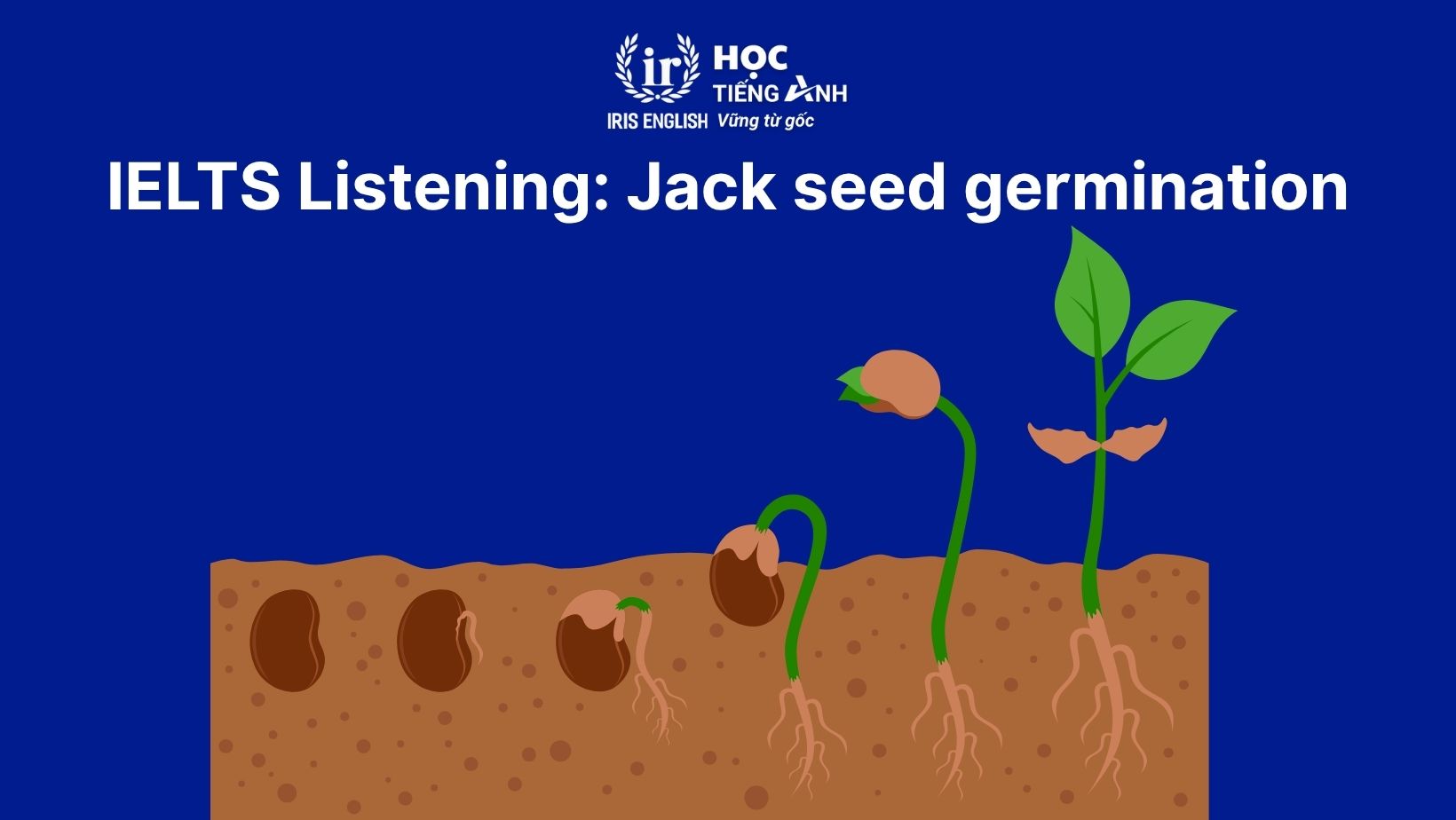 Jack seed germination listening answers
Jack seed germination listening answers
Jack seed germination listening transcript
EMMA: We’ve got to choose a topic for our experiment, haven’t we, Jack? Were you thinking of something to do with seeds?
JACK: That’s right. I thought we could look at seed germination – how a seed begins to grow.
EMMA: OK. Any particular reason? I know you’re hoping to work in plant science eventually …
JACK: Yeah, but practically everything we do is going to feed into that. No, there’s an optional module on seed structure and function in the third year that I might do, so I thought it might be useful for that (Q21). If I choose that option, I don’t have to do a dissertation module.
EMMA: Good idea.
JACK: Well, I thought for this experiment we could look at the relationship between seed size and the way the seeds are planted. So, we could plant different sized seeds in different ways, and see which grow best.
EMMA: OK. We’d need to allow time for the seeds to come up (Q22).
JACK: That should be fine if we start now. A lot of the other possible experiments need quite a bit longer.
EMMA: So that’d make it a good one to choose. And I don’t suppose it’d need much equipment; we’re not doing chemical analysis or anything. Though that’s not really an issue, we’ve got plenty of equipment in the laboratory.
JACK: Yeah. We need to have a word with the tutor if we’re going to go ahead with it though. I’m sure our aim’s OK. It’s not very ambitious but the assignment’s only ten percent of our final mark, isn’t it? But we need to be sure we’re the only ones doing it (Q23).
EMMA: Yeah, it’s only five percent actually, but it’d be a bit boring if everyone was doing it.
JACK: Did you read that book on seed germination on our reading list?
EMMA: The one by Graves? I looked through it for my last experiment, though it wasn’t all that relevant there. It would be for this experiment, though. I found it quite hard to follow – lots about the theory, which I hadn’t expected (Q24)
JACK: Yes, I’d been hoping for something more practical. It does include references to the recent findings on genetically-modified seeds, though.
EMMA: Yes, that was interesting.
JACK: I read an article about seed germination by Lee Hall.
EMMA: About seeds that lie in the ground for ages and only germinate after a fire?
JACK: That’s the one. I knew a bit about it already, but not about this research. His analysis of figures comparing the times of the fires and the proportion of seeds that germinated was done in a lot of detail – very impressive (Q25).
EMMA: Was that the article with the illustrations of early stages of plant development? They were very clear.
JACK: I think those diagrams were in another article.
EMMA: Anyway, shall we have a look at the procedure for our experiment? We’ll need to get going with it quite soon.
JACK: Right. So the first thing we have to do is find our seeds. I think vegetable seeds would be best. And obviously they mustn’t all be the same size. So, how many sorts do we need? About four different ones? (Q26)
EMMA: I think that would be enough. There’ll be quite a large number of seeds for each one.
JACK: Then, for each seed we need to find out how much it weighs (Q27), and also measure its dimensions, and we need to keep a careful record of all that.
EMMA: That’ll be quite time-consuming. And we also need to decide how deep we’re going to plant the seeds (Q28) – right on the surface, a few millimetres down, or several centimetres.
JACK: OK. So then we get planting. Do you think we can plant several seeds together in the same plant pot? (Q29)
EMMA: No, I think we need a different one for each seed.
JACK: Right. And we’ll need to label them – we can use different coloured labels. Then we wait for the seeds to germinate – I reckon that’ll be about three weeks, depending on what the weather’s like. Then we see if our plants have come up, and write down how tall they’ve grown. (Q30)
EMMA: Then all we have to do is look at our numbers, and see if there’s any relation between them.
JACK: That’s right. So …
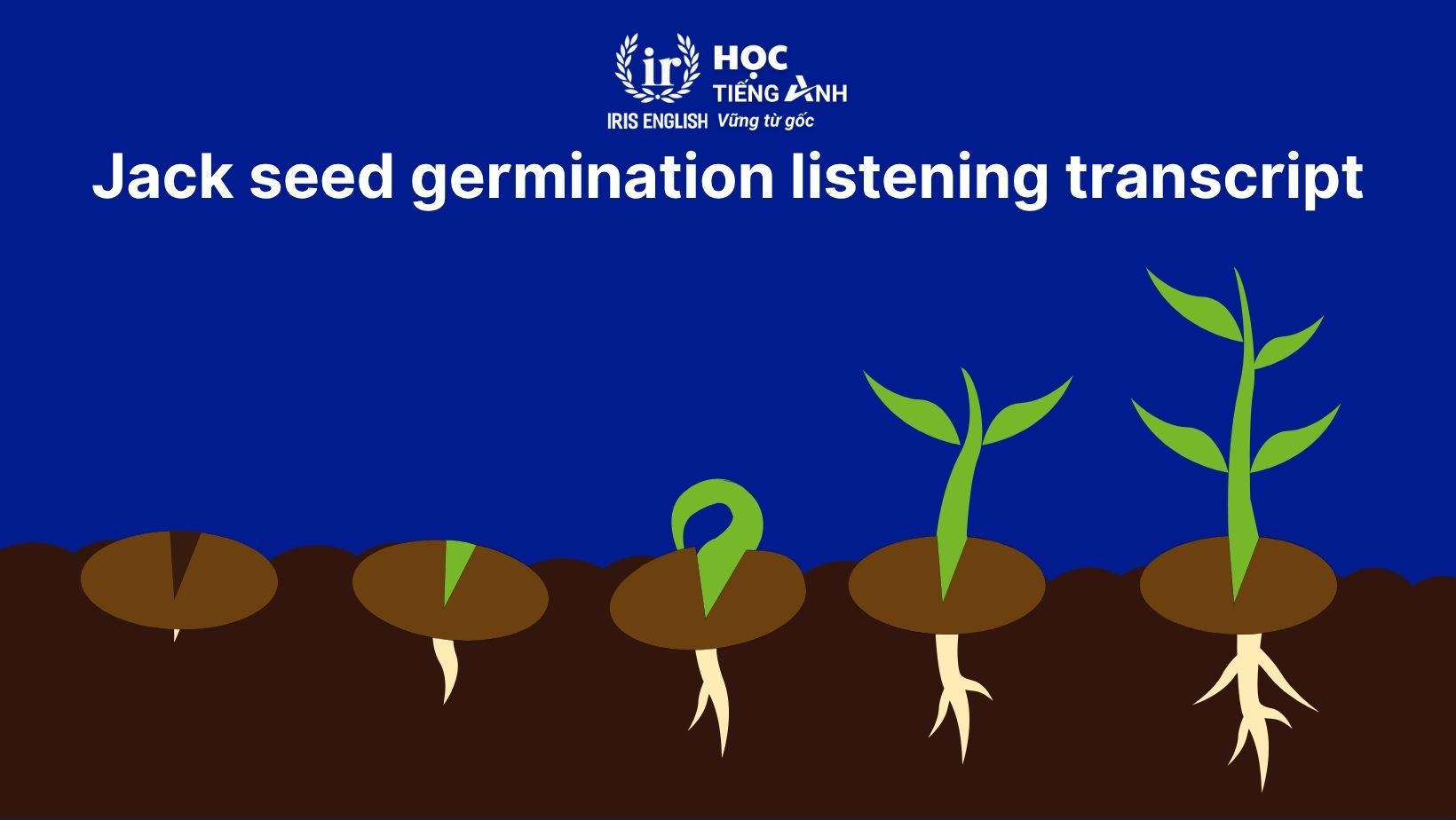
Jack seed germination listening transcript
Dịch nghĩa Jack seed germination listening transcript
EMMA: Chúng ta phải chọn một đề tài cho thí nghiệm của mình, đúng không Jack? Cậu có nghĩ đến cái gì đó liên quan đến hạt giống không?
JACK: Đúng vậy. Tớ nghĩ bọn mình có thể nghiên cứu sự nảy mầm của hạt – tức là cách một hạt bắt đầu phát triển.
EMMA: OK. Có lý do cụ thể nào không? Tớ biết cậu đang hy vọng sẽ làm việc trong ngành khoa học thực vật sau này…
JACK: Ừ, nhưng gần như mọi việc bọn mình làm đều sẽ liên quan đến lĩnh vực đó. Không, thật ra là có một học phần tự chọn về cấu trúc và chức năng của hạt trong năm ba mà tớ có thể chọn, nên tớ nghĩ làm thí nghiệm này sẽ có ích cho học phần đó. Nếu tớ chọn học phần đó, tớ sẽ không cần làm luận văn tốt nghiệp.
EMMA: Ý tưởng hay đó.
JACK: Tớ nghĩ cho thí nghiệm này, bọn mình có thể xem xét mối liên hệ giữa kích thước hạt và cách trồng chúng. Vậy nên bọn mình có thể trồng các loại hạt với kích thước khác nhau theo các cách khác nhau, rồi xem cách nào cho kết quả tốt nhất.
EMMA: OK. Bọn mình cần dành thời gian để hạt nảy mầm nữa.
JACK: Không sao đâu nếu bọn mình bắt đầu ngay bây giờ. Nhiều thí nghiệm khác cần nhiều thời gian hơn nữa.
EMMA: Vậy thì đây là một lựa chọn tốt. Và tớ không nghĩ là cần nhiều thiết bị lắm; bọn mình đâu có làm phân tích hóa học hay gì đâu. Mặc dù vậy cũng không phải vấn đề, vì phòng thí nghiệm có đầy đủ thiết bị mà.
JACK: Ừ. Bọn mình cần nói chuyện với giảng viên nếu muốn tiếp tục làm đề tài này. Tớ chắc là mục tiêu của bọn mình ổn thôi. Nó không quá tham vọng nhưng bài tập này chỉ chiếm mười phần trăm điểm cuối kỳ mà, đúng không? Nhưng bọn mình cần chắc chắn rằng không ai khác cũng đang làm đề tài này.
EMMA: Ừ, thật ra nó chỉ chiếm năm phần trăm thôi, nhưng sẽ khá chán nếu ai cũng làm cùng một thứ.
JACK: Cậu có đọc cuốn sách về sự nảy mầm của hạt trong danh sách đọc chưa?
EMMA: Cuốn của Graves à? Tớ đã đọc lướt qua khi làm thí nghiệm lần trước, mặc dù nó không liên quan lắm khi đó. Nhưng với thí nghiệm lần này thì lại rất phù hợp. Tớ thấy nó khá khó hiểu – nhiều lý thuyết hơn là tớ mong đợi.
JACK: Ừ, tớ cũng hy vọng nó mang tính thực hành hơn. Nhưng nó cũng có nói đến những phát hiện gần đây về hạt giống biến đổi gen.
EMMA: Đúng rồi, phần đó khá thú vị.
JACK: Tớ có đọc một bài viết của Lee Hall về sự nảy mầm của hạt.
EMMA: Bài về những hạt nằm trong đất hàng năm trời và chỉ nảy mầm sau khi có cháy rừng đúng không?
JACK: Đúng rồi. Tớ đã biết một chút về chủ đề đó, nhưng không biết về nghiên cứu này. Phân tích của ông ấy về số liệu so sánh thời điểm xảy ra cháy và tỷ lệ hạt nảy mầm rất chi tiết – rất ấn tượng.
EMMA: Có phải đó là bài viết có hình minh họa các giai đoạn đầu của sự phát triển cây không? Chúng rất rõ ràng.
JACK: Tớ nghĩ mấy sơ đồ đó nằm trong một bài viết khác.
EMMA: Dù sao thì, bọn mình nên xem qua quy trình của thí nghiệm chứ nhỉ? Bọn mình cần bắt tay vào làm sớm thôi.
JACK: Đúng rồi. Việc đầu tiên là tìm hạt giống. Tớ nghĩ hạt rau sẽ là lựa chọn tốt. Và rõ ràng là chúng không được có kích thước giống nhau. Vậy bọn mình cần bao nhiêu loại? Khoảng bốn loại là đủ chứ?
EMMA: Tớ nghĩ vậy là đủ. Mỗi loại sẽ có khá nhiều hạt.
JACK: Sau đó, với mỗi hạt, bọn mình cần biết trọng lượng của nó, và cũng đo kích thước nữa, và phải ghi chép cẩn thận lại.
EMMA: Việc đó sẽ khá mất thời gian. Và bọn mình cũng phải quyết định sẽ trồng hạt ở độ sâu bao nhiêu – trên bề mặt, vài milimet dưới đất hay sâu vài centimet.
JACK: OK. Sau đó là bắt đầu trồng. Cậu nghĩ bọn mình có thể trồng nhiều hạt cùng một chậu không?
EMMA: Không, tớ nghĩ mỗi hạt phải có chậu riêng.
JACK: Được rồi. Bọn mình cũng cần dán nhãn nữa – có thể dùng nhãn màu khác nhau. Rồi chờ hạt nảy mầm – tớ đoán sẽ mất khoảng ba tuần, tùy thời tiết. Sau đó bọn mình xem cây có mọc lên không và ghi chiều cao của chúng lại.
EMMA: Rồi việc còn lại chỉ là xem lại số liệu và xem có mối liên hệ gì giữa chúng không.
JACK: Chính xác. Vậy thì…
Xem thêm:
- Traffic changes in Granford listening answers, transcript
- Cookery classes listening answers, transcript và dịch nghĩa
- Artificial artists reading answers – Giải đề IELTS Reading
Hy vọng rằng bài giải đề CAM 13 IELTS Listening Test 1 section 2 – Jack seed germination listening answers, transcript mà IRIS English gửi đến độc giả sẽ là tài liệu hữu ích. Từ đó, các bạn có thể dễ dàng đọc hiểu và chinh phục bài thi IELTS Listening một cách nhanh chóng và hiệu quả. Ngoài ra, nếu bạn đang phân vân, tìm kiếm khóa luyện thi IELTS cho bản thân thì hãy liên hệ ngay qua zalo để được các tư vấn viên IRIS hỗ trợ nhé!


